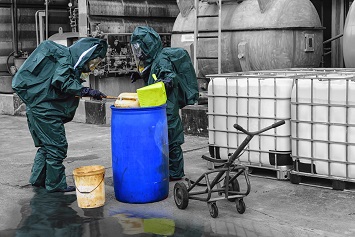The EPA’s Office of Land and Emergency Management (OLEM) has issued two documents intended to assist managers in the Agency’s 10 regional offices on deciding if site cleanup and emergency response should begin or continue in the context of the COVID-19 pandemic.
In both documents, regional managers are directed to consider the health and safety of personnel conducting essential activities such as responses to releases of chemicals, oil, and other hazardous materials/substances, as well as releases of pollutants or contaminants into the environment that may present an imminent and substantial danger to public health or welfare. These are the types of response activities that should not be suspended until the imminent and substantial danger of the release is satisfactorily controlled. Outside these essential response actions, managers are instructed to decide on continuing or suspending site response on a case-by-case basis, “considering both the regional and/or local COVID-19 situation and threats posed by the release/site.”
In addition to emergency response to releases of chemicals, oil, and other hazardous substances, the EPA’s field activities are conducted under specific programs—Superfund, Resource Conservation and Recovery Act (RCRA) Corrective Action, Toxic Substances Control Act (TSCA) polychlorinated biphenyl (PCB) cleanup, the Oil Pollution Act, and Underground Storage Tanks (USTs).
Considerations and Posture for COVID-19 Pandemic
Released March 19, 2020, this document emphasizes that the Agency’s Primary Mission Essential Function (PMEF)—that is, “to prevent, limit, mitigate or contain chemical, oil, radiological, biological, and hazardous materials during and in the aftermath of an accident, natural or man-made disaster in the United States, and provide environmental monitoring”—is the “highest priority and is to be maintained.”
Ongoing work in the above-listed programs is dependent to a large extent on local health declarations that are in effect due to COVID-19.
“Regions should consider whether to continue site operations or secure a site until the public health threat associated with the declaration is resolved,” the document states. “If there are no local health declarations that prohibit or discourage construction, investigation or design activity, Regions should anticipate that ongoing cleanup operations will continue.”
The regions are encouraged to work with their local, state, and tribal public health officials to ensure essential response personnel can access critical resources and/or sites.
“Regions should also ensure that response personnel [including contractors] have, or can readily access, the necessary personal protective equipment to respond to an environmental emergency in an area that is employing active mitigation for COVID-19,” states the OLEM.
Interim Guidance on Site Field Work Decisions Due to Impacts of COVID-19
Issued jointly by the OLEM and the EPA’s Office of Enforcement and Compliance Assurance (OECA), this April 10, 2020, guidance supplements the March 19 document and provides additional criteria for determining whether site field work should continue or be suspended. The guidance states:
“While on-site response actions may start or continue where there are no federal, state, tribal or local health declarations that prohibit or discourage such activities, in making decisions whether to start or continue work, other factors must also be weighed in making this decision including but not limited to the safety and availability of work crews, EPA, state or tribal staff; the critical nature of the work; logistical challenges (e.g., transportation, lodging, availability of meals, etc.); and other factors particular to a site.”
The guidance notes that when a region decides to start or continue work, it must review and modify, as appropriate, a response action’s health and safety plan (HASP) to ensure that it accounts for the Centers for Disease Control and Prevention’s (and/or others’) COVID-19 guidelines, including any potential virus transmission into or across areas. If a decision is made to temporarily pause work, the regions should continue to monitor site conditions and plan the logistics for safely resuming field work as soon as appropriate.
Work should be suspended or reduced in the following specific situations:
- State, tribal, or local health officials have requested suspension.
- A site worker has tested positive for COVID-19.
- There are interactions at the site with high-risk groups.
- Field personnel are not able to access the site because of travel restrictions or medical quarantine.
- Sites do not allow for social distancing.
Site-specific decisions should be based on the extent of endangerment posed to human health or the environment. The guidance lists specific types of releases and exposures that present high risks, including, for example, mine blowouts; expanding contaminated plums affecting drinking water; and disposal of hazardous wastes that pose a substantial risk if not removed.
Also, the guidance points out that much of the work that advances site cleanups occurs off-site. These tasks include preparing investigation reports, modeling, negotiating with parties, preparing progress reports, and maintaining compliance with obligations such as financial assurance.
“This work should continue,” says the OLEM/OECA.

